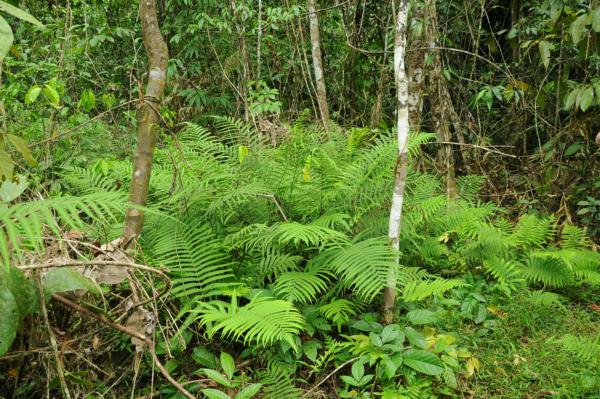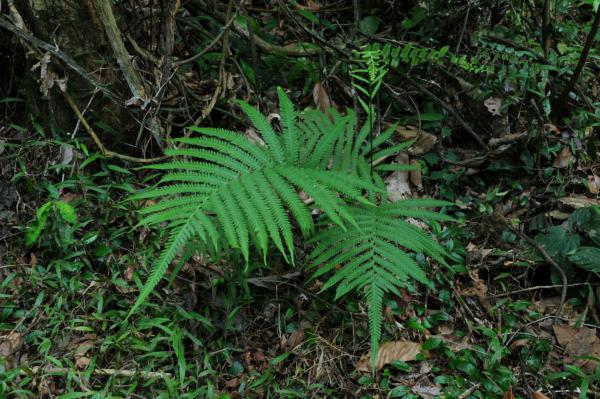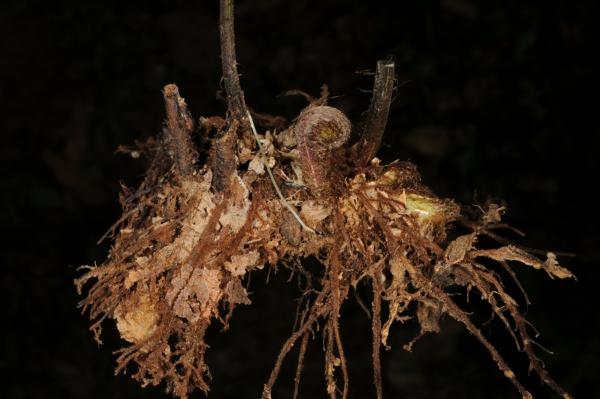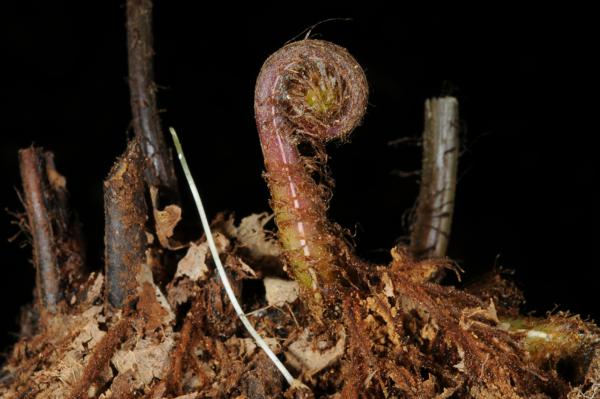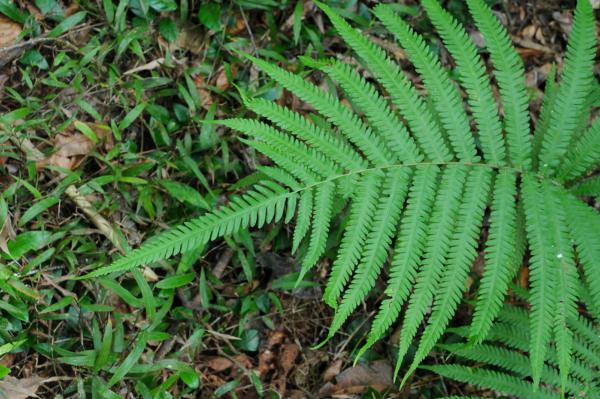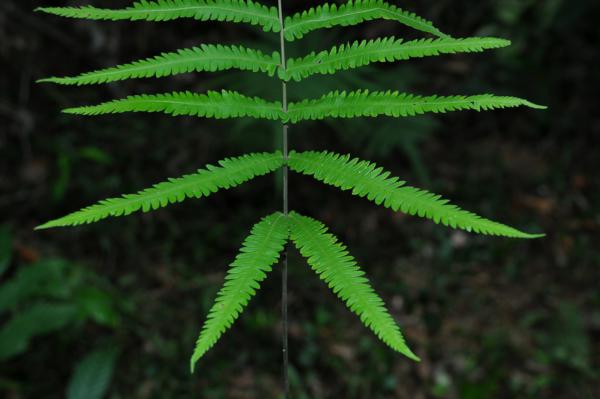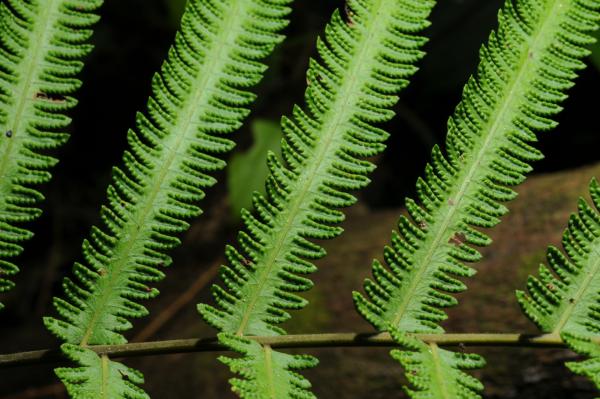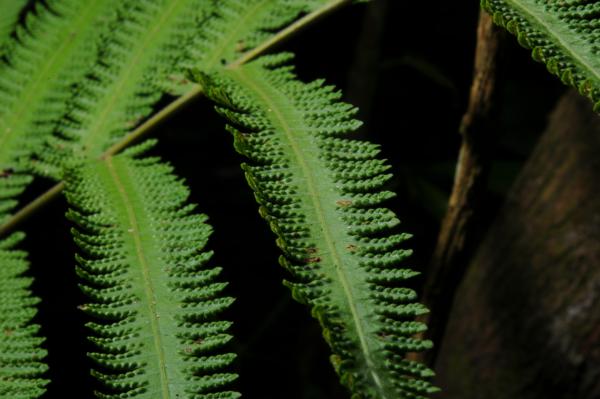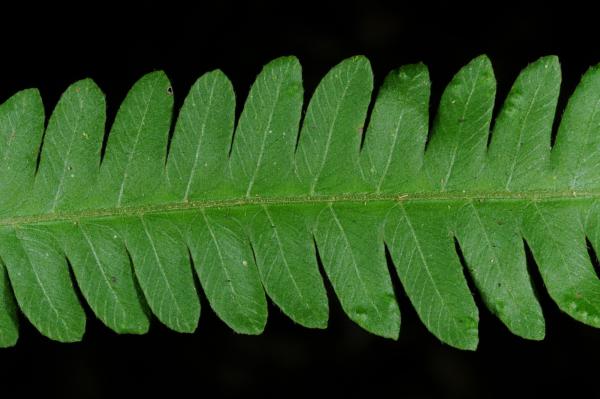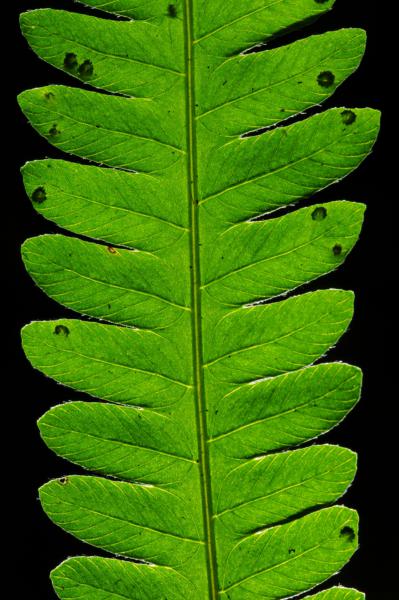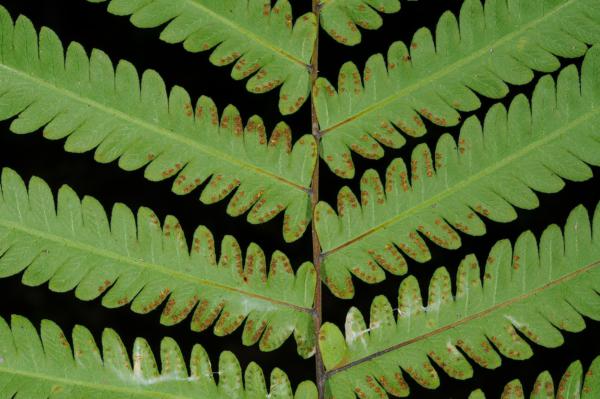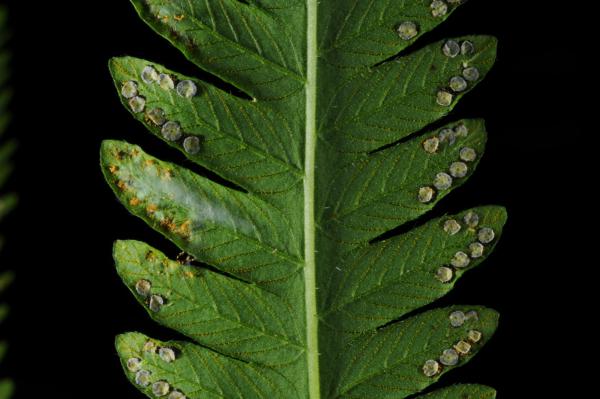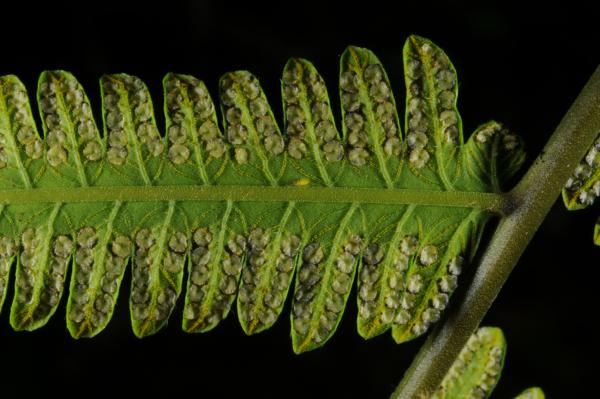
Cyclosorus opulentus (Kaulf.) Nakaike
Family
Thelypteridaceae
Nomenclature
Cyclosorus opulentus (Kaulf.) Nakaike, Enum. Pterid. Jap., Filic.: 277. 1975. – Aspidium opulentum Kaulf., Enum.: 238. 1824. – Amphineuron opulentum (Kaulf.) Holttum, Blumea 19: 45. 1971; Holttum, Dansk Bot. Ark 23: 212. 1977; Holttum, Fl. Males., Ser. II, Pterid. 1: 548, f. 19b–c. 1982 [‘1981’]; Boonkerd & Pollawatn, Pterid. Thailand: 218. 2000. – Thelypteris opulenta (Kaulf.) Fosberg in Fosberg & Sachet, Smithsonian Contr. Bot. 8: 3. 1972; Tagawa & K.Iwats., Fl. Thailand 3: 432. 1988. – Amblovenatum opulentum (Kaulf.) J.P.Roux, Strelitzia 23: 201. 2009. – Type: Chamisso, Guam (LE).
Aspidium extensum Blume, Enum. Pl. Javae: 156. 1828; Christ, Bot. Tidsskr. 24: 109. 1901. – Nephrodium extensum (Blume) T.Moore, Index Filic.:91. 1858; Bedd., Handb. Ferns Brit. India: 269. 1883; E.Smith, J. Siam Soc. Nat. Hist. Suppl. 8: 5. 1829. – Dryopteris extensa (Blume) Kuntze, Rev. Gen, pl. 2: 812. 1891; C.Chr., Bot. Tidsskr. 32: 343. 1916. – Cyclosorus extensus (Blume) Ching, Bull. Fan Mem. Inst. Biol. 8: 182. 1938; Holttum, Rev. Fl. Malaya ed. 1, 2: 264, f. 150. 1955 [‘1954’]; Holttum, Dansk Bot. Ark. 23: 232. 1965. – Thelypteris extensa (Blume) Morton, Amer. Fern J. 49: 113. 1959; Tagawa & K.Iwats., SouthE. Asian Stud. 3(3): 80. 1965; Tagawa & K.Iwats., SouthE. Asian Stud. 5: 69. 1967; Tagawa & K.Iwats., Acta Phytotax Geobot. 23: 53. 1968.
Description
Description from Holttum, Fl. Males., Ser. II, Pterid. 1: 548, f. 19b–c. 1982 [‘1981’].Rhizome short creeping (but also reported in the Flora of Thailand as ascending to erect); stipe to 70 cm long, rufescent, basal scales 10 mm long, hardly 1 mm wide. Laminae to 80 cm long; pinnae to 25 pairs or more; a pair of much-reduced basal pinnae sometimes present; apex of frond narrowly acuminate, deeply lobed in its basal part and grading into the upper pinnae. Largest pinnae commonly to 25 x 2.5 cm, largest seen 40 x 3.5 cm, lobed 3/5–3/4 towards costa; lobes slightly oblique, slightly falcate; costules commonly 4 mm apart, on large sterile fronds to 6 mm; veins 8–10(–15) pairs, basal pair both touching sinus-membrane or meeting below it at a varying angle to produce an excurrent vein; lower surface of rachis, costae and costules bearing very short acicular hairs with scattered longer ones (to 0.5 mm) on costules, veins, sinus-membranes and margin, small pale yellowish spherical sessile glands variously distributed along costules and veins, surface between veins usually bearing some short erect acicular hairs and small colourless to yellowish capitate hairs; upper surface of costae covered with pale acicular hairs. similar hairs scattered on costules and veins. Sori confined to lobes of pinnae, supramedial, in slight depressions; indusia thin, persistent but shrivelled when old, bearing marginal yellow spherical sessile glandular hairs and sometimes a few acicular hairs which are not marginal; an elongate gland sometimes present on stalks of sporangia .
Distribution in Thailand
NORTHERN: Lampang, Tak; NORTH EASTERN: Nong Khai; SOUTH-WESTERN: Uthai Thani, Kanchanaburi; CENTRAL: Saraburi; SOUTH-EASTERN: Chon Buri, Rayong, Chanthaburi, Trat; PENINSULAR: Chumphon, Surat Thani, Phangnga, Nakhoh Si Thammarat, Phatthalung, Trang, Satun, Pattani, Yala, Narathiwat.
Wider Distribution
Sri Lanka to Malesia, N Australia, Micronesia and Polynesia.
Ecology
On rather dry mountain slopes in light shade usually at low altitudes.
Proposed IUCN Conservation Assessment
Least Concern (LC). This species is widespread and not under any known threat.
Voucher specimens - Thailand
Middleton et al. 5398, Phatthalung, Khao Pu - Khao Ya National Park (E).
Habit
Habit
Rhizome
Crozier
Frond apex
Basal pinnae
Upper surface of rachis and fertile pinnae
Upper surface of fertile pinnae
Upper surface of sterile pinna
Venation
Lower surface of rachis and pinnae
Lower surface of lamina
Young sori
Site hosted by the Royal Botanic Garden Edinburgh. Content managed by Stuart Lindsay, Gardens by the Bay, Singapore and David Middleton, Singapore Botanic Gardens. Last updated 24 January 2012
